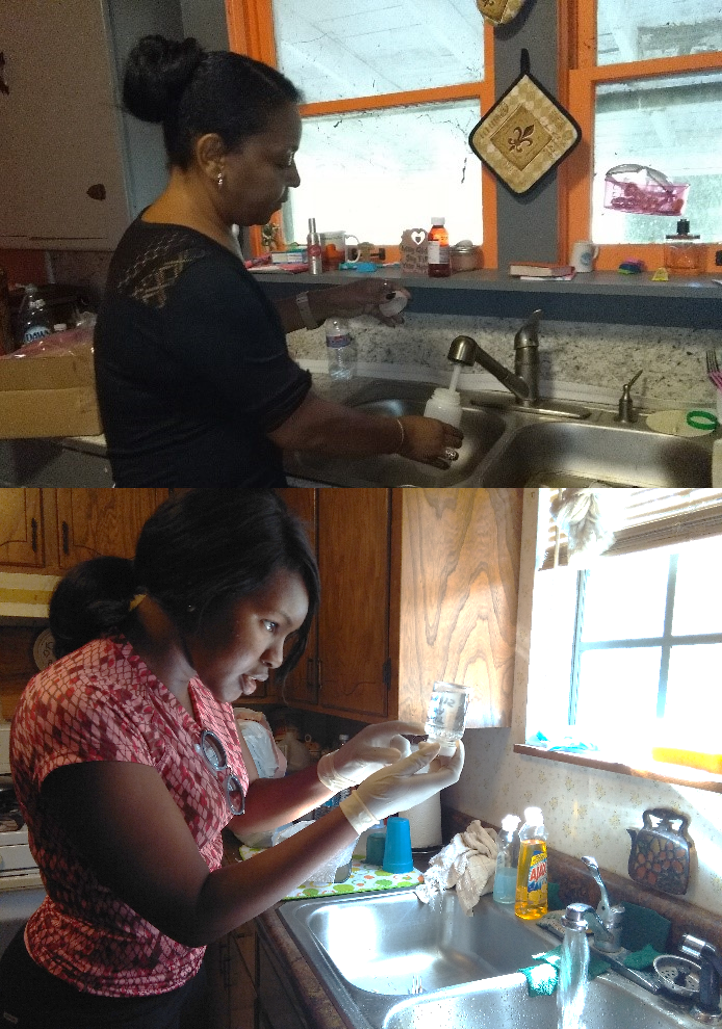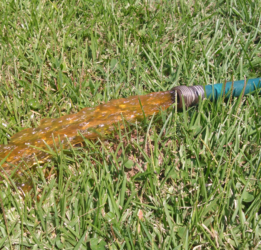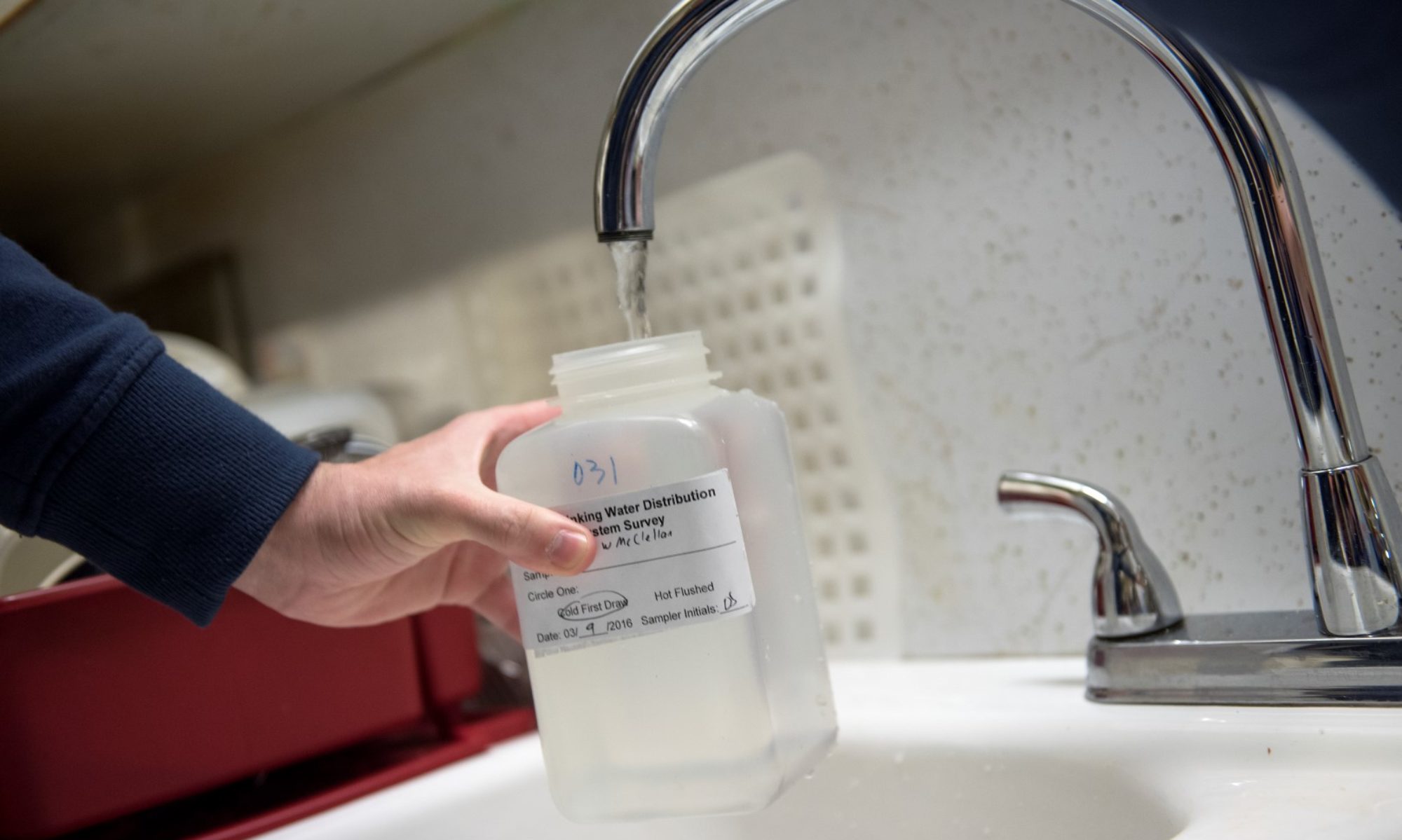Coliform Contamination
Enterprise, Louisiana is a remote unincorporated area in Catahoula Parish Louisiana, which despite great effort exerted by our water samplers,

and despite what the map to the left would have you believe, did not appear to exist on any google map when we looked.
Enterprise captured media attention this past summer (2017), after researchers from Tulane University sampled the town’s drinking water and found indicators of fecal contamination (Enterococcus).
In the words of one local, Henry Lewis, “It’s like we’re in a third world country.” The town’s water has a history of frequent exceedances in disinfection by-products (cancer-causing Trihalomethanes); and consistently high levels of iron, a bacteria nutrient which most states do not regulate, but which can be an indicator of a corroding water distribution system or corrosive water conditions. Iron can also decrease free chlorine- removing disinfectants which can in turn trigger growth of water pathogens, and stain clothes.

Community advocates Janie Jones of the Council on Policy and Social Impact, and Wilma Subra of the Louisiana Environmental Action Network (LEAN), organized an additional round of sampling September 15th. Locals John Tiser, Bo Aarons, Jodie Vinson and Peggy Poole, facilitated the sampling efforts of our small group of volunteers. These included Danielle Edwards, senior Health Services Administration major at Louisiana State University Health Sciences Center, School of Public Health (LSUHSC-SPH); Haley Capello, graduate student in Public Health at the LSU; Marie Hurt, of Southern United Neighborhoods (SUN); Beth Butler, of A Community Voice (ACV); and Jed Fisher. VA Tech provided sampling and laboratory support; while our partners at LSUHSC-SPH, provided field support.
We tested for total coliform, E. coli, total chlorine, metals (e.g., lead and iron), and disinfection byproducts (DBPs).
While no bacteria were detected, we were surprised to find that 25% of the 20 homes sampled had no detectable chlorine.  Results indicate that 60% exceed the secondary iron standard; but of greater concern- over three quarters of the homes sampled (80%) exceeded the required primary standard for DBPs (80 ppb) (n=20). These are very troubling results.
Results indicate that 60% exceed the secondary iron standard; but of greater concern- over three quarters of the homes sampled (80%) exceeded the required primary standard for DBPs (80 ppb) (n=20). These are very troubling results.
Lead levels over 15 ppb, EPA’s non-health based standard, were detected in 3 out of 15 homes (20% over the EPA standard) – one as high as 103 ppb. These results make us wonder how Enterprise can be meeting Federal lead regulations. The law only allows 10% of homes sampled to exceed the EPA standard in high risk homes. EPA requires that sampling be directed to worst-case homes, such as those with lead service lines. Our sampling event was random in that high risk homes were not targeted- home plumbing materials are unknown to us. A similar sampling approach in Flint MI during 2015, also only detected about 20% of random samples over the action level.
KNOE News of Monroe, LA reported the appeals of one local, John Tiser: “This is not a finger pointing thing. This is not a blame game. This is just trying to find a solution to the problem so we can get clean water…I’ve got a 15-year-old and a nine-year-old that are in desperate need of clean water.”
The next steps are to advise locals on possible solutions, including low-cost home filtration or water treatment systems. The aim is to provide locals with knowledge that will empower them to take proactive steps to protect the health of their families and neighbors.
Contact info: Ms. Janie Jones | Ms. Wilma Subra
